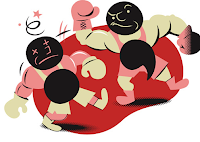
Before we start, a semi-colon isn’t used to start a list! The thing you need for that is a colon (:).
Correct Usage
Semi-colons are used to join complete sentences. In this sense, they’re like connectives.
e.g. I went home and had a bath.
How to Use Semi Colons for Effect
Use it to balance opposites within a parallel sentence construction. Sounds complicated? Actually it’s pretty easy.
It was the best of times; it was the worst of times.
A Tale of Two Cities, Charles Dickens, 1859
OR
Everything was gigantic; I felt like an elf.
Any fool can put in a semi-colon. Most people can put them in the right place once they’ve been shown. Precious few can use them elegantly.
Here are some examples, broken into categories:
Unusual Links
The meal was delicious; unfortunately it had gone cold.
London traffic doesn’t flow; it oozes.
To Compare:
To Show Change – Then and Now:
In the Nineteenth Century, Europeans sent missionaries to Africa; now, Africa is on a mission to Europe.
Opposite moods
Waves battered the shore; inland was deathly calm.
His shirt was perfectly white; a tiny red dab marked the spot above his heart.
Winter was cold, wet and miserable; Summer was worse.
‘Women’s conversation is co-operative; men’s is competitive.’
‘The fall in the hospital had either shown him the light or scrambled his brains; it was impossible to say which.’ Catch-22
BE AWARE. The semi colon is NOT used in dialogue (i.e. direct speech – “Blah blah blah”). Dashes are used instead.
